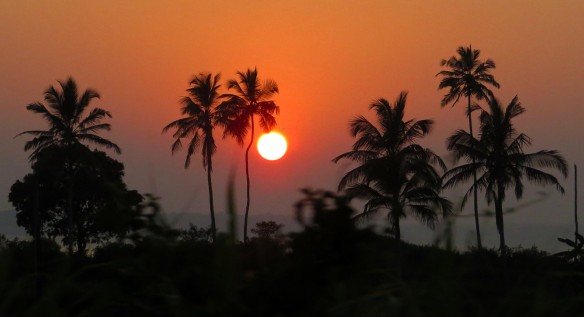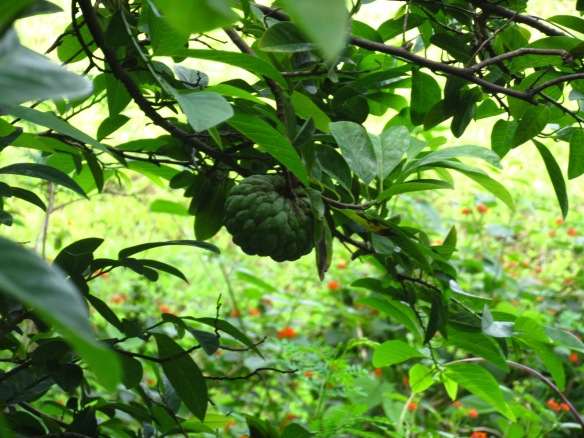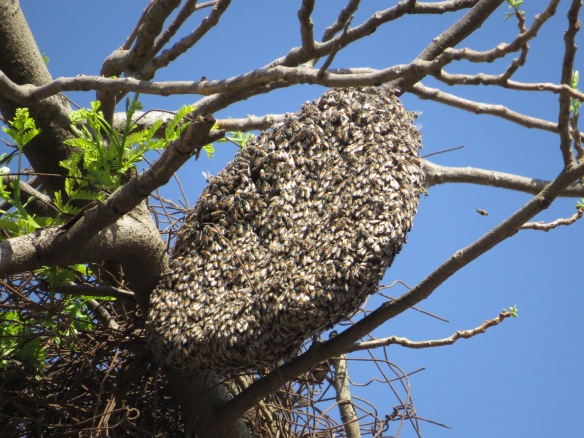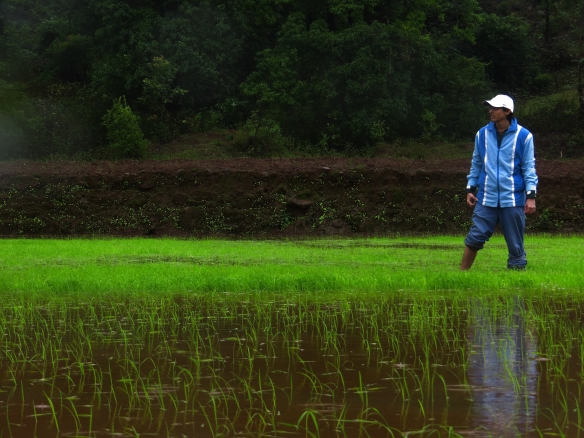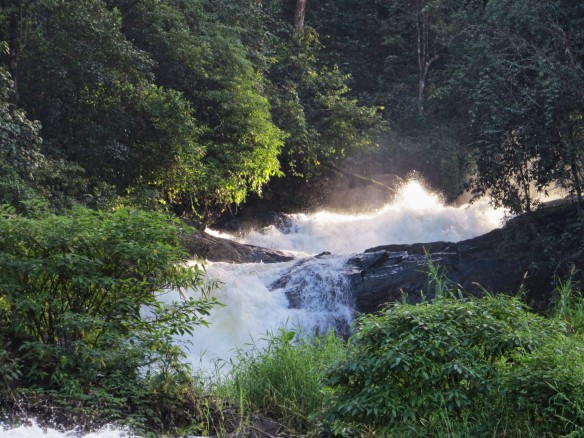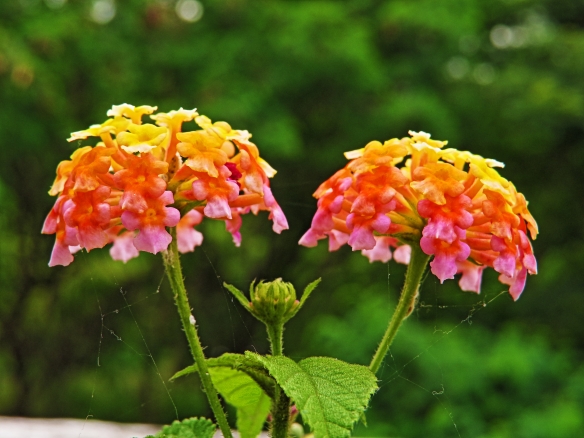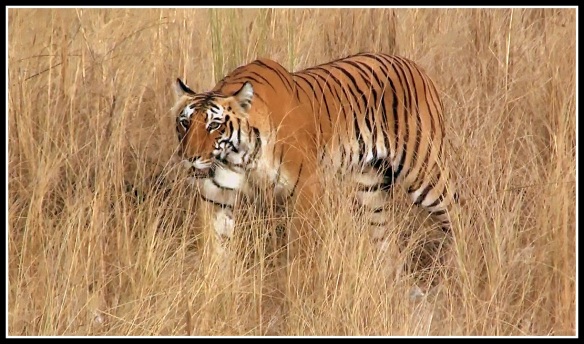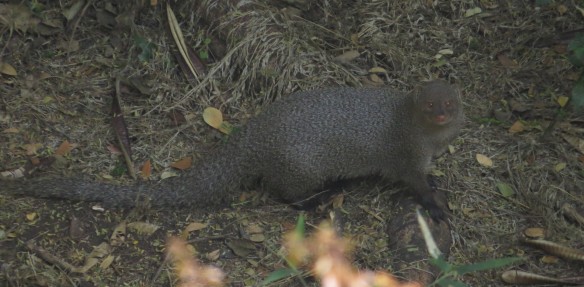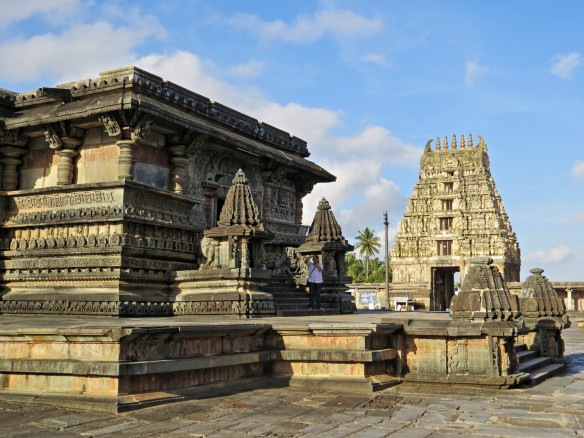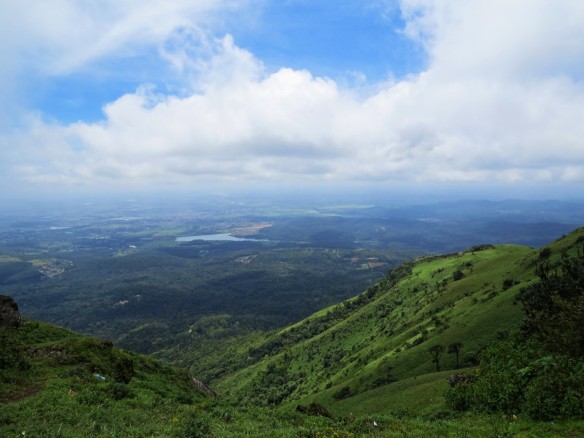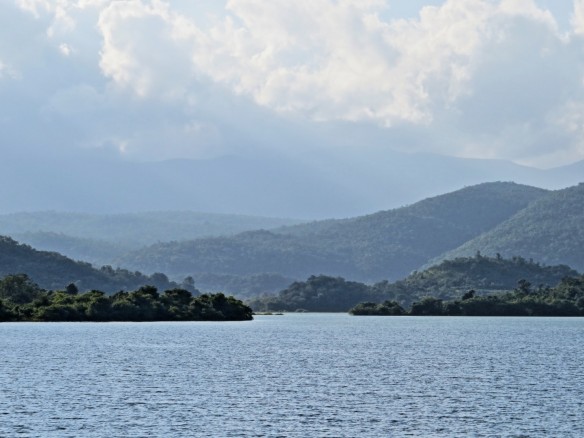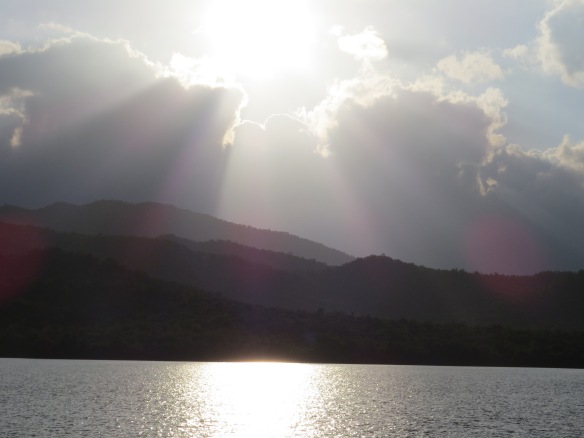Raptor-Rising
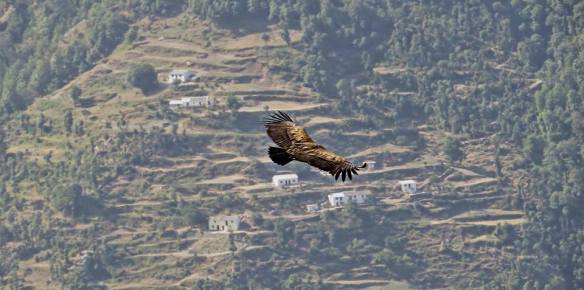
A Himalayan Griffin near Pangot, at an altitude of more than 6000 ft above sea level.
So where was I? Oh yes, I was back in Pune from the Pt. Calimere visit and my arrival marked the arrival of the birding season as well! Since the time I’ve been into bird watching I’ve had a habit of daily going out into my balcony every morning and scanning the sky and the surroundings for birds. It was in the first week of November when I spotted my first winter migrant for the region of Pune for the year 2012, and this time, as a full-fledged bird watcher.
It was a morning like any other but you could feel the winter chill approaching. I was scanning the sky and I found a bunch of Black Kites (Cheel or Ghar) circling over the forest area near my place of residence. I observed that the Kites were circling around and then occasionally mobbing one of the birds, I found this behavior weird but not unheard of yet I decided to have a closer look with my binoculars. It was then that I realized that one of the birds was not a Kite.

A Black Kite
Now I’ll try my best to describe the feeling that bird watchers get when they think they’ve found a bird that they’ve never seen before. I’d even like non birders to do an experiment of going out with a bird watcher for a field trip and recording his/her reactions once he/she thinks that they’ve spotted a new species of bird.
You, yes you, will get a feel of a sudden aura that surrounds that person and it reflects in their face, their bodily movements and their reactions. There is this sudden madness of movement, a sudden joy in their eyes, a look of amazement and bewilderment, and an unstoppable wave of excitement. The ethics of bird watching are sometimes forgotten when this happens, this mostly tends to happen with amateurs.
There is a sudden rush of questions in their minds instantly wanting to know what bird that is, is it a rare one; oh I think I’ve spotted an uncommon one, oh is it a migrant and so on and so forth. And, my oh my, if they’ve got a camera, be it a simple digital camera with a puny five time optical zoom or a massive SLR with Lenses that can put the price of your SUV to shame, then you’re in for a treat!!

A silhouette of a Crested Serpent Eagle in flight.
It’ll be still fine if the bird is gliding in the sky, everyone will have enough space to find a suitable angle for a record shot (a first picture, to keep record of first sighting), but if the bird is jumping from perch to perch in a dense foliage then the rush to be able to get a record shot, the harassment to everyone present and to the bird, the pushing and shoving, sometimes stomping, the sheer enormity of brutal and stupendous greed to capture a silly single shot of the bird on film can put the chaos of a ‘Kumbh Mela’ to shame!!
See I’d like to mention that yes there are ethics to bird watching, I will not go into details but just remember that birds are after all living things and yes they have their own private lives. Sometimes, bird watchers to birds are simply like paparazzi to a celebrity which means that they are a nuisance, so it is always expected from us to maintain a level of decency and distance being the so called ‘superior’ species. We all have our views and opinions on this so in the end it all depends upon the individual’s sensitivity towards nature and his conscience. Whatever we do, it is always good to ensure that the bird or its surrounding (habitat) is not disturbed.

The bird perched on the pole is an Osprey. This is a habitat shot, the Osprey prefers habitats close to large water bodies. It prefers fish so it can be considered as its main source of food. It is also known as a Sea Hawk or a Fish Eagle around the world.
My apologies, learning a bit about myself, I can get distracted so easily. I was saying that I had spotted a bird which was not a Black Kite. See that a Black Kite (cheel or ghar) is our most common raptor, a bird whose numbers have increased quite astoundingly and a reason why this raptor is mostly ignored by many bird watchers.
What is truly appreciable about this raptor is that it has managed so well to adapt to, and survive close to human habitation and surroundings, so much so that the more you tend to go away from the urban world the less you tend to see this bird. It is a large brownish bird distinguished from all similar type of birds by its fork tail which is very distinct especially when seen in flight. A majority of other raptors have rounded tails.
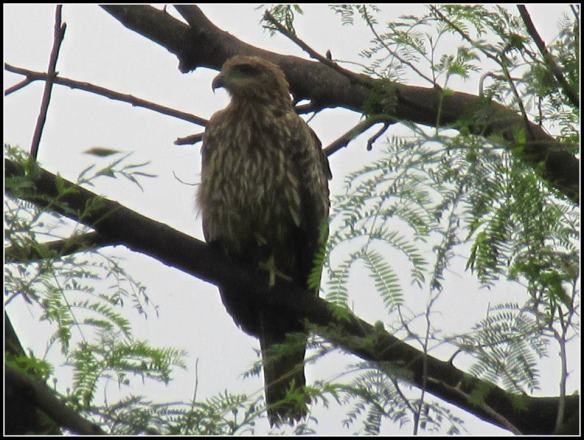
A Juvenile Black Kite
So yes, the other bird that I had spotted amongst these Kites had a roundish tail and was more or less of similar size, another distinguishing feature, but the most distinguishing feature of all was the pale appearance of the under-parts of the bird. As I was watching it in flight, I observed that it had a light brown head, a cream coloured body and the wings and tail had very distinct black streaks.
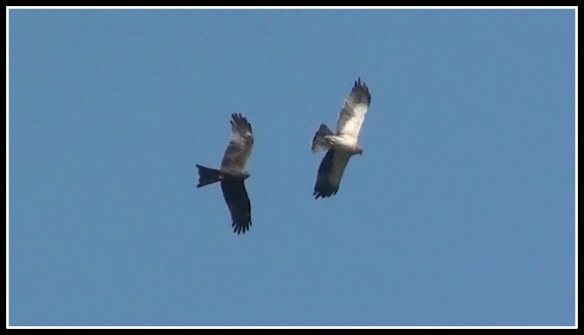
A black Kite (Left) and a Booted Eagle (Right). My first image of a Booted Eagle at the time when I spotted in Nov 2012
By now, judging from the description, any seasoned bird watcher reading this will guess that it is either a pale morph of a Booted Eagle or a Bonelli’s Eagle. Don’t worry, I had managed to get a record shot too, and by comparing that shot with the picture and description in my field guide I was able to confirm that it was a pale morph of a Booted Eagle. It was my First Migrant Raptor for the season. Now I will be describing what morphs and plumages are in birds, but that is for later. In this chapter, all I want to concentrate on is raptors, my favourite bird species of all!
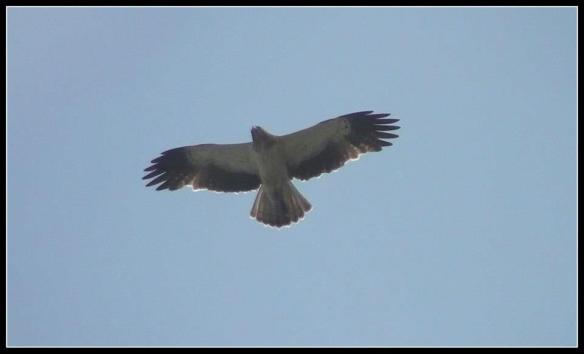
Booted Eagle- Pale Morph..a winter visitor to India
Raptors to me are the most impressive bird species of all. I find them very majestic and their overall look simply reflects confidence and power, so it is not a surprise when we find them at the top of the food chain.
Raptors are predatory birds or in ornithological terms, birds of prey. They are characterized by their keen senses, hearing and especially vision, strong hook like talons (feet) for catching prey, and large curved beaks for tearing into flesh. They mostly hunt and feed on animals, fish and smaller birds and insects. Some prefer carrion like the majority of Vultures have carrion as their main food source.

A Himalayan Griffin. A vulture species found in the North of India.
Now birds from some other families also eat insects and fish but are not known as predatory birds because they tend to catch, kill and devour prey entirely with their beaks for example Bee Eaters, Drongos, Flycatchers, Kingfishers, Storks and Gulls etc. This is not the case with predatory birds. Predatory birds firstly use flight and vision to spot prey, use their talons to catch and kill prey and finally their beaks to tear into flesh and devour the prey. Also, predatory birds are diurnal (active in daylight). Owls are also birds of prey but they are nocturnal or active by night. So the birds of prey can be divided into two groups, Raptors which are active by day or diurnal and Owls which are active by night or nocturnal.
Now, focussing on our diurnal birds of prey, I’d like to briefly describe the various families of raptors found in the Indian Subcontinent. The diurnal birds of prey belong to the order Falconiformes. It is given under the taxonomic classification of various Orders and Families of birds in the animal kingdom.
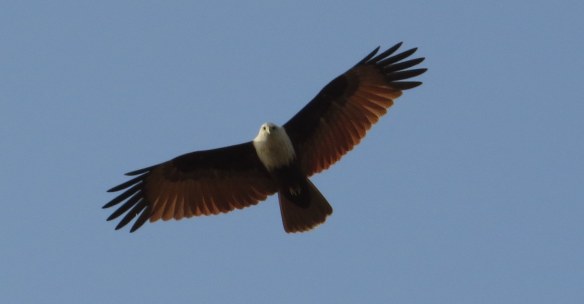
A Brahminy Kite, another member of the raptor family.
The various families under this are Kites and Bazas, Osprey and Fish Eagles, Vultures, Serpent Eagles, Harriers and Hawks, Honey Buzzards and Buzzards, Eagles and Hawk Eagles and finally, Falcons. Every family mentioned has its own species and sub- species. So considering this we have almost seventy different species of raptors only in the Indian Subcontinent, resident as well as migrant. Most of us only knew about Kites till now; see what you’ve been missing?

Booted Eagle- Dark Morph, compare this to the picture of the pale morph a few paragraphs above.
What is more amazing is the level to which their bodies have evolved over the years. Many are capable of spotting prey from miles away, a few are capable of sustaining flights at blinding speeds, most are capable of gliding through dense foliage without the least of effort. A mixture of traits like super vision, incredible flight and sharp and powerful talons and beaks has made these birds some of the most formidable predators on earth. Here are a few birds of prey I found worth mentioning in my post.
The Peregrine Falcon is quite simply one of the boldest and fiercest predators on earth. This falcon, a bird slightly bigger than a House Crow is capable of achieving speeds of more than 300 kilometres per hour when it dives to catch its prey.
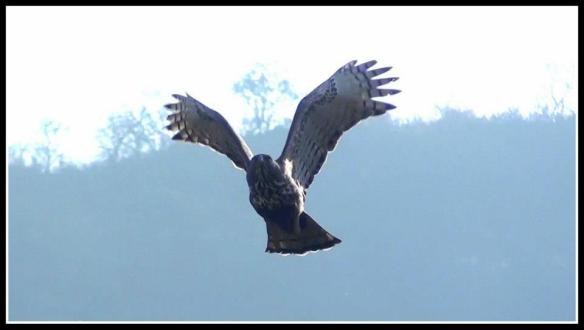
A Crested Hawk Eagle taking off
Peregrines hunt from above and, after sighting their prey, drop into a steep, swift dive that can top 200 miles an hour (320 kilometres an hour). While diving they tuck their wings in and plummet towards the prey while spreading the wings out at the last moment to slow down and catch prey. It is an amazing feat of body dynamics and manoeuvrability where the body of the falcon faces pressures of more than 10G near impossible for a human being to be able to sustain.
No creature on earth can match it or even come close to it when it comes to raw speed. The fact that this bird can dive at such rocketing speeds and then be able to catch prey in flight is sheer testament to the marvels of nature’s engineering. Strong wings coupled with a wonderful aerodynamically built body and super vision is what helps this little falcon achieve this unimaginable feat! A true wonder of nature’s magnificence!
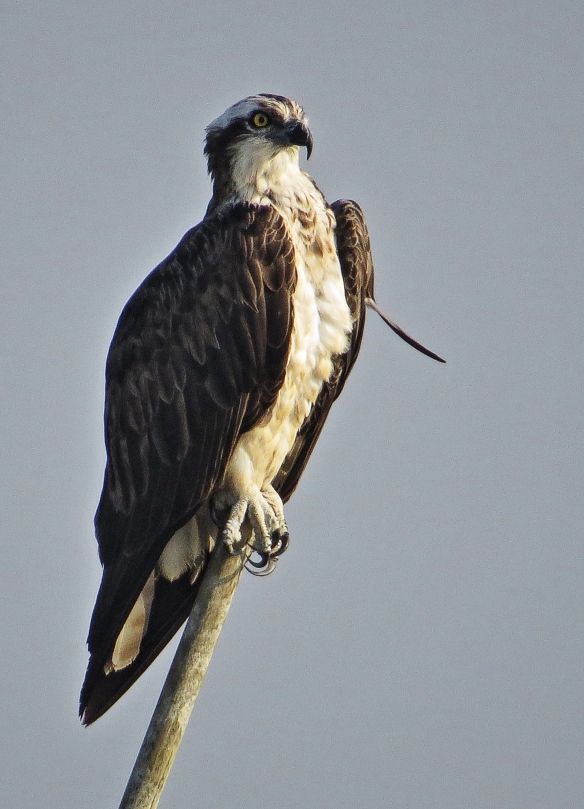
Osprey.
The White Bellied Sea Eagle. It is known that many creatures in the animal kingdom can fight to their deaths to defend their territories. Yes the White Bellied Sea Eagle is one such territorial bird. They don’t like other birds intruding into their territory. Normally it takes a simple warning, mobbing or bullying to ward off an intruder. But sometimes other eagles of the same or different species try to establish their territories on grounds already taken; this is when things can turn really ugly.
The sight of White Bellied Sea Eagle’s battle for turfs is one of the most intriguing and yet incredibly dangerous for the birds involved. It is one of the most daring feats of nature. The birds involved in such turfs battle firstly try to gain an altitude advantage over the other by flying higher and higher into the air. Then in one crazy moment they get close to each other and lock talons and start plummeting towards the earth into a whirling free fall. The whirling game is a dare to see which of the eagles unlocks the talons first to avoid crashing into the earth. It is an act which often leads to death. The one that hangs on to the last and survives is the ultimate victor and claims the territory!
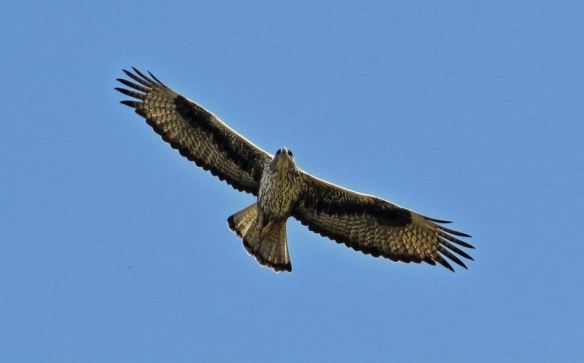
Bonelli’s Eagle
The Bearded Vulture. The Bearded Vulture is also known as the Lammergeier, and is one of the largest but least known raptors in the world. It is found in Europe, Asia and Africa.
These are normally found at altitudes of more than 2000m but they occasionally descend to lower altitudes as well. There are reports of these birds being spotted living and flying at 7,600m near Mount Everest. Yes in India they are only found near the Himalayas. They can weigh up to 8 kilos and has a wingspan of over 3 meters.
Bearded vultures are mostly scavengers; they are known to pick up the bones of dead animals and drop them from great heights, repeatedly if necessary, over a hard surface such as a cliff or a large rock. When the bone finally breaks open, the vulture feeds on the highly nutritious marrow. They are also known to kill tortoises and break open their shells by doing the exact same thing.
Usually, Bearded Vultures despise rotten flesh, a trait that sets them apart from most other vultures. According to some, these birds attack live prey sometimes, even larger animals such as chamois and wild goats; they are not adapted to kill large prey, so they would knock said animals off cliffs, to cause their death and feed on their carcasses. The same has been said of a number of other mountain dwelling raptors, one of them, the Golden Eagle. To my knowledge, only the Golden Eagle has been confirmed to use this hunting technique.

A BandedGoshawk in flight.
I have only seen videos, pictures, read and heard about the birds mentioned above but I’ll surely get to see them in the wild someday, but it makes me sad because I would have loved to match the description of the raptors that I have mentioned above with an amazing picture.
The birds of prey that I was able to spot and observe during winter till January are the Booted Eagle, the Steppe Eagle, and the Eurasian Marsh Harrier which are migrant species.

A Steppe Eagle, another long distance migrant. My apologies for some very poor images in this post including this one. I tried do the best i could with the camera I had in those early days 🙂
The Oriental Honey Buzzard and the Common Kestrel of which some species are resident and others migrant, and then the Tawny Eagle, Bonelli’s Eagle, Shikra and Short Toed Snake Eagle and the Red Necked Falcon which are mostly resident birds of prey. I might also have spotted an Indian Spotted Eagle or Greater Spotted Eagle but that needs to be confirmed.

Oriental Honey Buzzard. It can sometimes be very difficult to identify this bird on field as it has lots of plumage variations, but a very unique characteristic about it is the shape of its head, which is like that of a pigeon. So this characteristic helps in identification when the plumage does not.
All in all I am happy and satisfied having spotted two migrants like the Booted and the Steppe eagle in the very first week of November. It was pleasure enough for an amateur like me with all the other species I saw in my first year as a bird watcher. And still it’s a long way to go before the birding season ends! I’ll surely be on the lookout for more.
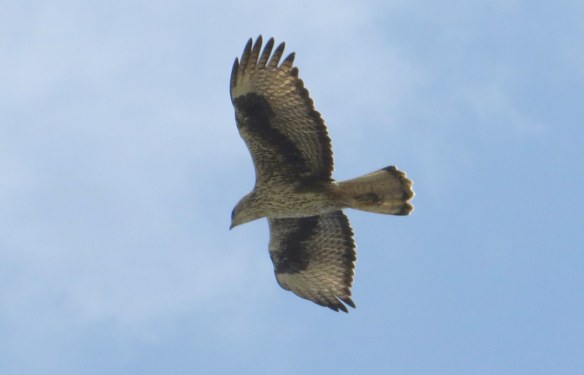
Bonelli’s Eagle. Our very own royal resident raptor.
Now a few paragraphs are certainly not enough to describe the magnificence of raptors but it’s time we move on and continue our journey as birds of all kinds continue to amaze us to point of insanity 😀
Here ends the seventh chapter about my journey into the amazing world of birds. I hope you enjoyed reading it and I really wish that you come back again to read another chapter from the life of OneHappyBirder
Oh yes it is also that time of the year!! Its Christmas!! Wish you all a Merry Christmas and a Happy new year!! Cheers! 🙂




